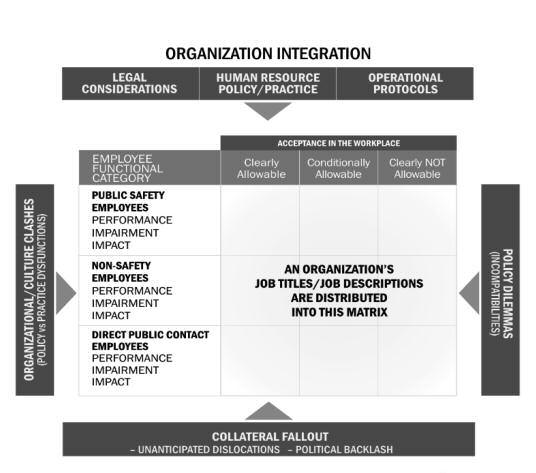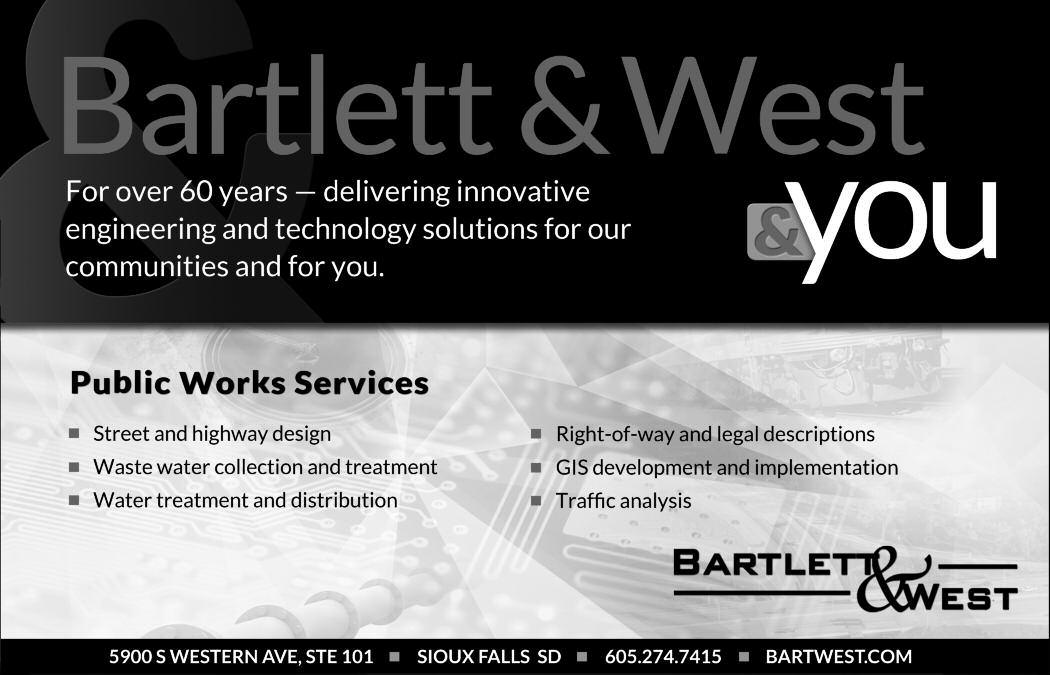
11 minute read
Marijuana at City Hall
By William Kirchhoff and Stephen Zimney
The legalization of marijuana has stirred hot debate on both sides of the issue.According to ProCon.org, some 20 states and the District of Columbia have currently made medical marijuana legal, and there is every indication that more will follow. Until just recently, local governments could adopt a position on its use at the workplace that held—as long as the federal government considered marijuana illegal—they need not spend time or energy tryingtoproactivelydealwiththeissue.Therewaslittleto do except to maintain a zero-tolerance stand.
Advertisement
Thegame,however,hasnowchanged.Nolongerwillpublic managersbeabletousepreviouslyexistingcaselawtodelay ordeflectfacingthemedicalmarijuanaissueshead-on.
With Attorney General Eric Holder’s August 2013 announcement that the federal government will no longer prosecute or incarcerate users, we coauthors submit this prediction: In those states where the use of medical marijuana is legal, managers and all government officials willbeconfrontedwiththepressingrealitythatemployees willwant,andinmanycasesdemand,thattheybeallowed totreatcertainmedicalconditionswithmedicalmarijuana, bothonandoffthejob.It’salsolikelythatotherstateswill follow, given current societal trends.
Thepurposeofthisarticleistwofold.First,itwillhopefully generate additional study and debate, since across-theboardconclusionsarehardtodraw.Beitthedifferencesin political and cultural realities or the array of actions taken by localities in a given state against which others will be compared, we suspect that each administration will face the need to customize its thinking regarding marijuana adaptation protocols.
Thesecondpurposeistoprovidelocalgovernmentmanagers with the framework that will allow them to begin dealing withthiscomplexissue.Innowaydoesthisarticleadvocate for or against the use of medical marijuana.That discussion islefttophysiciansandscientists.
But the article does postulate that managers will have to wrestlewiththepracticalities,frictionpoints,anddilemmas associated with the use of medical marijuana in the workplace. It also offers suggestions on how to practically and strategically address medical marijuana at city hall.
Profound Culture Swing
According to a 2013 Brookings Institute study, The New Politics of Marijuana Legalization: Why Public Opinion Is Changing, public opinion has shifted dramatically toward support for the legalization of marijuana in less than a decade. Polls consistently show that substantially more than 50 percent of Americans support legalized medical marijuana.Theascendancyofthepublic’sacceptanceofit is nothing short of astonishing.
ThisyearColoradoandWashingtonbecamethefirststates to legalize the recreational use of marijuana from among the 20-plus states that had already legalized marijuana for medical use when this copy was written. It is also noteworthythattheadoptionoftheresolution, “InSupport of States Setting Their Own Marijuana Policies Without Federal Interference, ” by the U.S. Conference of Mayors this year advises the federal government to back off and leaveituptothestatesandlocalgovernmentsastohowto regulate and manage marijuana.
A Proactive Approach
The speed of this emergent trend clearly warns us that, beyond the need to institute well-thought-out policies and practices to achieve effective management and accountability, pressure will also mount on city hall to develop new standards with a new mindset and a different business model—one that is much more adaptable to this 21st century sea change in workplace dynamics.
Tiptoeing away from medical marijuana at city hall is a mistake. Resisting on the basis of knee-jerk opinion will surely backfire. Smart managers will proactively address thischangebyseekinginputandnewideasfromemployees, lawyers, physicians, insurance industry members, and others(seeGetInformedbox).
Failure to get ahead of the problem will result in unnecessary legal, operational, and morale costs for public entities and the taxpayers they serve. It appears that only a handful of forward-leaning city managers, such as Steve Pinkerton,Davis,California,andBetsyFretwell,LasVegas, Nevada, are using task forces and focus groups to address the long-term ramifications of medical marijuana in the publicworkplace.
Toputitsimply,whatdowedonowthatweknowemployees havearighttouselegallyprescribedmedicalmarijuana?
Get Informed
These resources can help public administrators learn moreabouttheuseofmarijuanaformedicalpurposes:
j Marijuana Myth Facts: A Review of the Scientific
Evidence by Lynn Zimmer, Ph.D., and John
Morgan, M.D. j Smoke Signals: A Social History – Medical,
Recreational, and Scientific by Martin Lee. j The Pot Book – A Complete Guide to Cannibis and Its Role in Medicine, Politics, Science, and
Culture, edited by Julie Holland, M.D. j CNN 2013 documentary “Weed, ” Dr.SanjayGupta reports on the attitudinal recalibration taking place among a growing number of medical professionals (www.youtube.com/watch?v=tShnVEmdS2o).
Choices With Consequences
Whatseemstobeapracticalandappropriatefirststepisto think through all of the obvious day-to-day impacts that legalized medical marijuana might bring with it, including insurance and risk management issues, different testing protocols, training requirements, and other challenges.
But our research and work with focus groups tells us that there is a spider web cause-and-effect element to this, which can exponentially increase the frequency and consequences of decision making. Consider one example.
Bloomberg Businessweek has reported that K-9 experts in ColoradoandWashingtonworrythatadogtrainedtosniff outdrugscannotdifferentiatebetweenmarijuanaandsuch other drugs as methamphetamine. And it is difficult and costly to retrain them otherwise.That means, according to the government lawyers, patrolling with K-9s currently used to sniff out drugs runs the risk of civil rights violations and lawsuits. So how do the local government manager, police chief, and K-9 supervisor handle this?
Do you simply retire and replace the animals like obsolete equipment at great cost to the operations of the police department, including the emotional reaction from the K-9 officers who view their animals as their partners? How the handlers react and what their labor organization does will requiresomedeepthinkingandcontroversialdecisionmaking.

Proactive Decision Making
For managers who want to take a proactive approach, a decision-makingtool—the“MedicalMarijuanaDecision Matrix ” (see Figure 1)—will help them sort out the requirements for necessary change as well as identify accompanyingdilemmas.
The matrix requires that the centerpiece—the 3-by-3 grid—be filled out, with all of the organization’s job positionsdistributedacrossthenineboxesbasedonthejob performance conditions and the performance impairment impactthataccordinglyattendseachjobposition.
Some position impairment categorizations are clear and simple, with others falling in the grey area. The proprietyandcommonsense,forexample,ofrestricting first responders and dispatchers from using medical marijuana is much clearer than when considering plan reviewers and librarian positions.
Our research and management experience points to the three large categories of employees into which all local jobtitles(seeleftsideoffigure)canbeslotted.Theyare public safety employees, non-safety employees, and direct public contact employees.
Acrossthetopofthegridarethethreepolicycategories that can be applied to each job position. For each, the citycandeclaremedicalmarijuanaasclearlyallowable, conditionally allowable, and clearly not allowable.
What makes this task particularly daunting are the interconnecting and often conflicting pressures that can and will emerge within and between four impacting realities that, in our chart, surround the central grid. Collateral fallout that attends our efforts will include unintended dislocations, community backlash resulting inelectedofficialconflictsthatpoliticizepolicy-making efforts. How does the fire chief, for example, deal with the potential need to reassign first responders to nonfield duty when current budgeting has eliminated the needed number of slots that are required to handle the new reality?
Organizational/culture clashes will be the most significantandproblematicareaofthefour.Inourstudy,
Figure 1. Medical Marijuana Decision Matrix.
Organization integration requires that we anticipate and eliminate, to the extent possible, the lack of synergy between the legal implications, human resource policy and practices, and operational protocols. How, for example, are the differing perspectives and beliefs between legal, human resources, and department directors dealt with? Who decides that an employee is impaired or otherwise—a medical, human resource, or legal specialist?

Policy dilemmas will emerge from the introduction of new policy around medical marijuana use and management.Are we calling into question, for example, existing policy that no longer is compatible with our new stand? And, do we create one new policy that is incompatible with other policies that are trying to meet a different set of pressures in our organization’s reality?
Whatdoyoudowithpoliceresourcesthatwerededicated tothearrestandprosecutionofmedicalmarijuanausers? Is it best to transfer the positions to other duties or eliminatepositionstoachievecostsavings?
Will there be a second-chance policy and if so, will it be thesameforallemployees,includingseniormanagement staff? Will certain positions and/or work units be subjected to more frequent and invasive drug testing for medical marijuana than others? Do testing policies for marijuanaclashwithexistingpoliciesforsuchlegalpain medicationsasVicodin?
How do we make such policies compatible? Will that effort call many more policies into question, as clear inequities between policies begin to emerge?
we have heard widely dispersed reactions ranging all the way from “It’s about time this happened” to “This spellsthebeginningoftheendofoursociety ’sstrength and sense of responsibility and accountability. ”
This range of opinion and bias will exist in the workforce,too.Whatemployeessign-ontointermsof formal policy versus how they actually behave in the workplace will test the best of human resource professionals.
Thetensionbetweenthosewhobelievethatemployees have an ethical imperative as well as the legal right to treatalegitimatemedicalproblemwithmarijuana,and those who oppose such a viewpoint for any one of the many valid concerns associated with the use of legal medical marijuana, is certain to complicate matters.
How are police department attitudes and practices successfullychangedtoacceptthattheuseofmedical marijuana is no longer an act for which one can be prosecuted or incarcerated? How will age differences among the supervisors affect the development of new medical marijuana policies? Is labor to be treated as an equal policy-making partner regarding medical marijuana or should it be business as usual?
These are just a few examples of the complex consequences and dilemmas that will confront managers, many whose career experience and view was heretofore molded for years by the singular principle of zero-tolerance.
Addtothistheinevitablecorevaluedilemmasthatwill emerge from normal labor and management tensions, workforce age differences, moral convictions, laws, professional standards, and science versus speculation that will be included in the problematic mix of influencers, and one can easily see the Rubik’s-cube nature of policy-making efforts. Mishandled, the financial, emotional, and operational well-being of local governments currently using K-9s for marijuana detection will be stressed if the disposition of the animals is not handled satisfactorily to all interests.

This is just one of many “choices with consequences” that thelegalizationofmarijuanaformedicalpurposeswilldrop on the manager’s decision-making plate. While these unintendedconsequenceswilleventuallybesortedout,there isamorecomplicatedandstrategicissue:Howdowechange theorganizationalculturesurroundingmedicalmarijuana?
Toexpecttheorganizationasawholetoacceptnewpolicies that require some managers to suspend or eliminate deeply ingrainedfeelings,learningexperiences,andbiaseswithout recognizing that such a change requires careful navigation between the intellectual versus the emotional side of any typeofchangeactivityisprofessionallywrong.
A manager can either adopt a reactive wait-and-see approachormovetheorganizationintoaproactiveposture. Ifthewait-and-seereactionissubscribedto,thenwesubmit that the results will be similar to such turtle-like adaptation to social changes we experienced in the past decades regardingsexualharassment,workplacediscrimination,and diversityatcityhall.
If managers can be open to the new thinking that medical marijuana should be treated no differently than such
Medical Marijuana Policy Question Checklist
Throughout the process of formulating policy, it is helpful to have a set of guidelines to keep policymakers on track. Local governments need to examine the following questions before establishing policiespertainingtomedicalmarijuanamanagement:
j What is the purpose of your medical marijuana management policy? j Who will be covered? j What behavior will be prohibited? j Will employees be required to notify their supervisors of their use of medical marijuana?
What will the consequences be if the policy is violated? j Will there be a reeducation effort and return-towork provision? j How will employee rights and confidentially be protected? j Who will be responsible for enforcing the policy for compliance?
prescription drugs as Vicodin, Endocet, and Oxycodone, then the toll on the organization can be mitigated.
Agreement with this supposition requires the drafting of policiesandtheimplementationofmanagementprocedures that benefit from the multiple viewpoints residing in the communities of healthcare professionals, behavioral researchers,safetyexperts,andalocality ’sownemployees and union officials.
In the long run, we will need all of their input to help effectivelymaintainmaximumorganizationalproductivity within the parameters of court decisions, moral concerns, and practical considerations.
Strategic Approach: Establish a Framework
Some fundamental questions and conflicts around moral, ethical,andvalues-basedissueswillnecessarilyberaised and accordingly will demand careful debate. We suspect that this exercise will lead to the inevitable conclusion thatculturechangeisthelinchpindynamicthatspellsthe difference between successful versus unsuccessful adaptation to medical marijuana.
Fourstagesofactivityarerequiredforaneffectivestrategic planning effort. The players need to be interdisciplinary to include senior management personnel from all major functionalanddepartmentalentitieswithintheorganization.
Stage1.Identifythecollectivecorporateandsocialvalues at play within and throughout the organization around the subject of medical marijuana.
1. What is the corporate “ world view ” around employee relations principles? 2. What are the personal values of key senior management personnel, and how do those views impact organizational orientation around the issue? 3. Where are the disconnects between implicit (often hidden) values and the explicit values imbedded in formal policy statements (that now surface because of this new debate)? 4. Which values are, or potentially will be, in conflict with each other?
Stage 2. Identify the juxtaposed realities within the organization that are/will come in conflict vis-à-vis the introduction of medical marijuana.
1. Safetyconcernsversusequitablepersonneldeployment. 2. Legal exposure versus relaxed HR policy formation. 3. Labor relations versus political imperatives.

4. External PR (image) impacts versus internal adaptation realities.
Stage 3. Convene functional areas separately in groups (adding staff as needed) to formulate an integration templatefortheirareaofresponsibilityintheorganization, taking the output of Stages 1 and 2 as the starting-point guidelines for their efforts.
Necessarily, different functional areas and departments will have different priorities and trade-offs. Each group should be encouraged to develop its scenarios without considerationoftherestoftheorganization,soastogetto the bottom-line implementation paradigm for their functional area.
Stage4.Reconvenethelargerorganizationplanninggroup, with senior representatives of each functional area returning with the output(s) from their group’s individual efforts. The goal in this stage is to complete an organization-wide integration of all plans, ironing out the conflictsandinconsistenciesthatwillundoubtedlysurface.
Only with thorough and careful efforts can the unintended consequences of “policies in conflict” be minimized and hopefully avoided once the integration and its policies “go live. ” It goes without saying that legalization of medical marijuana places many a quandary at the doorstep of city hall. This article is intended to help managers begin addressing all the complicated policy-making issues that will accompany this sea change in workplace dynamics.
William Kirchhoff is a municipal advisor, Coronado, California, who served as a city manager for 30 years with five communities (billkirchhoff@yahoo.com). Stephen Zimney is president, Zimney Associates, New York, New York (szimney@zimney.com).
Editor’s Note: The authors want to thank the many professionals who reviewed drafts of this article and provided input and ideas. Among them were the general counsel to a large public safety union; retired and active city managers; labor officials; police and fire chiefs; human resource directors; municipal attorneys; plaintiff’ s attorneys; physicians; CEOs of development and technology companies; and public employees who shared how easy it is to use medical marijuana in the workplace.
Reprinted with permission from the December 2013 issue of Public Management (PM) magazine published and copyrighted by ICMA (International County/City Management Association), Washington, D.C.











